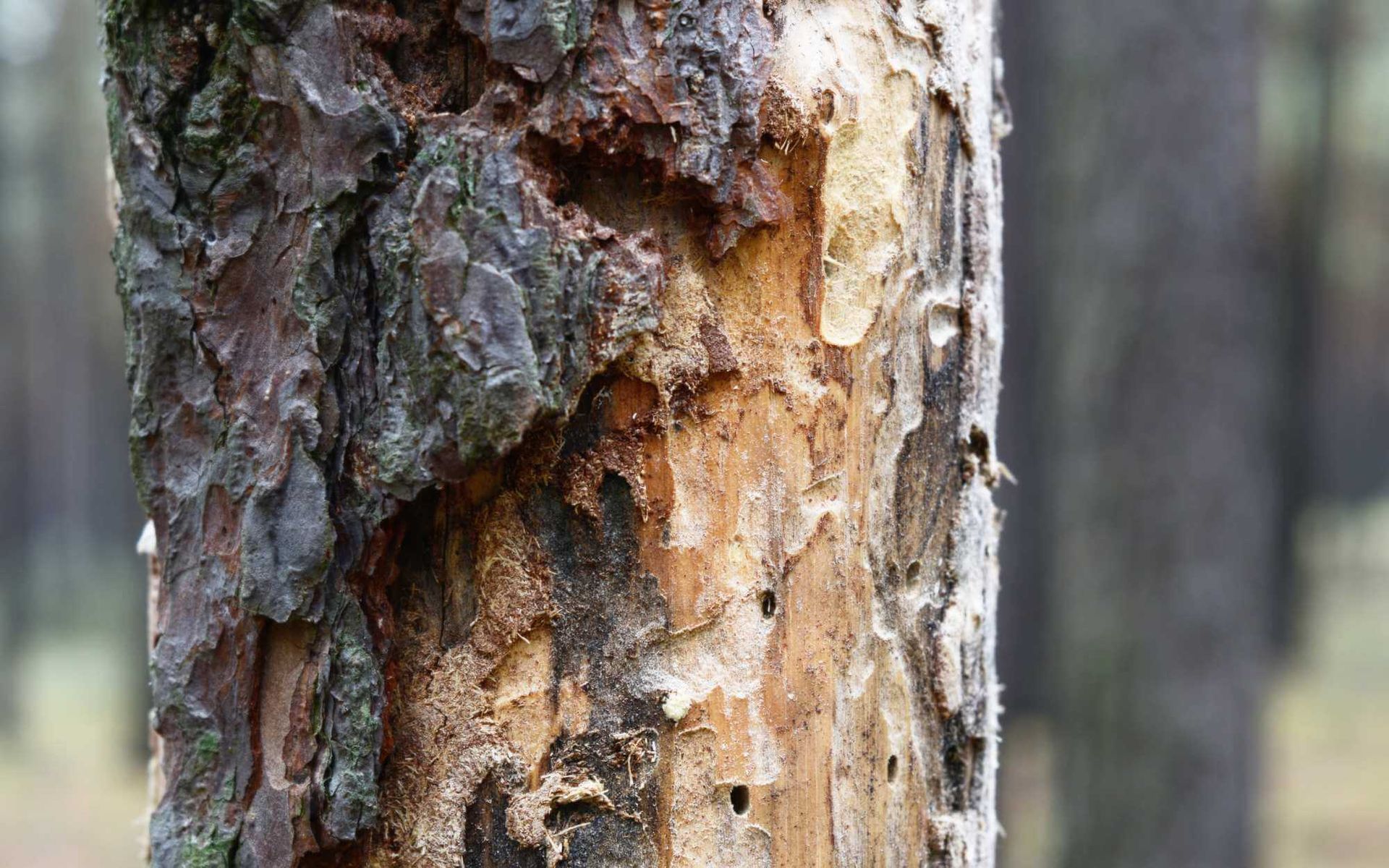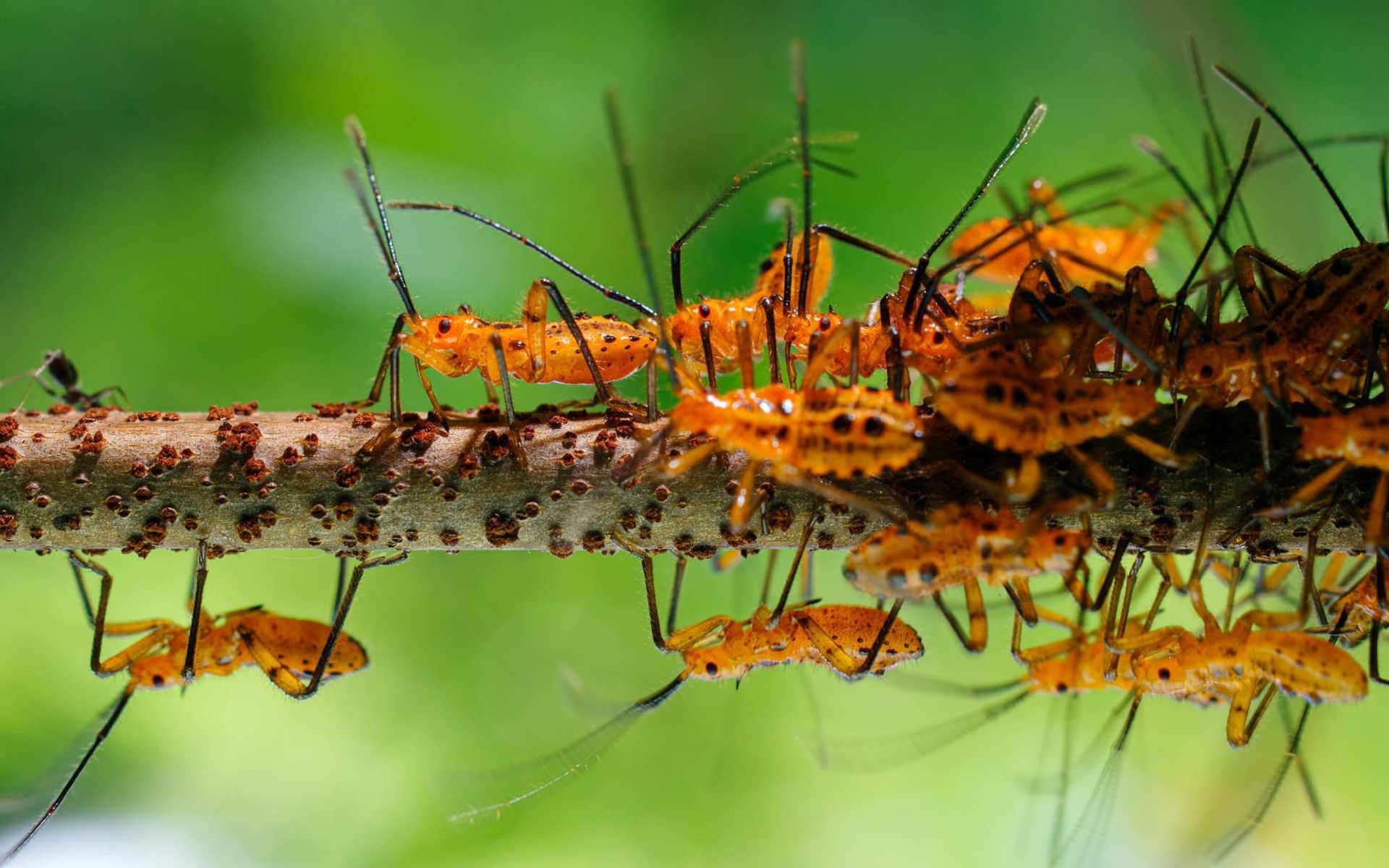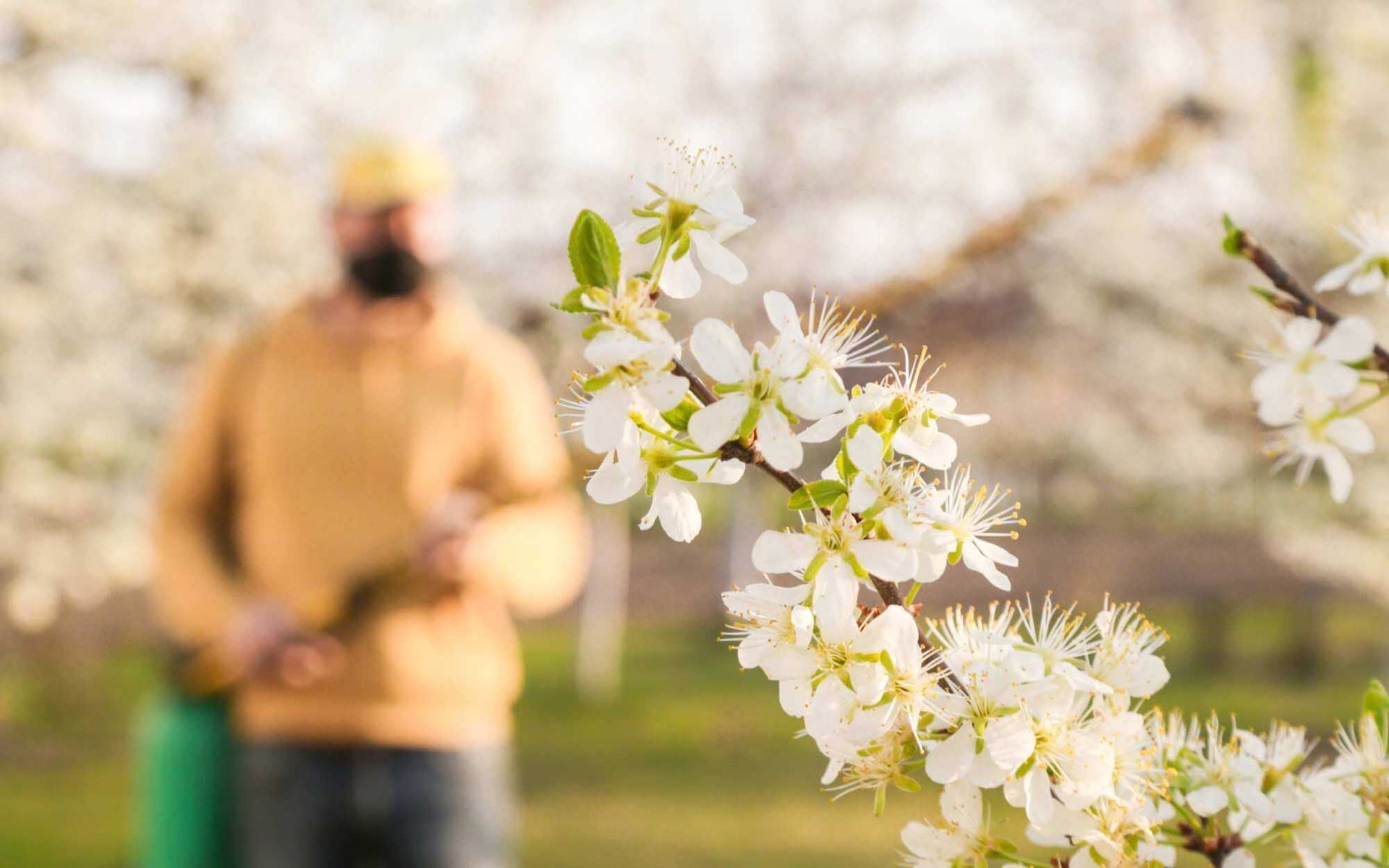A Comprehensive Guide to Managing Tree Insect Infestations
PUBLISHED ON
SHARE THIS ARTICLE

Are you facing the issue of tree insect infestations in your yard?
If so, you’re not alone—many home and business owners struggle with these pesky critters each season. Despite their small size, insects can cause extensive damage to trees, potentially reducing their lifespan and aesthetic value. That’s why it’s so important to take the necessary steps to effectively manage tree insect infestations.
In this comprehensive guide, you’ll learn how to identify the insects, pinpoint the source of the infestation, and take the appropriate steps to keep your trees healthy and strong. Don’t let tree pests take over your yard—start taking control today!
Understanding the Common Types of Infestations
Keep an eye out for these common tree insect infestations that may affect your trees:
- Aphids: These small, pear-shaped insects can cause leaves to curl, yellow, and drop prematurely. They produce a sticky substance called honeydew, which can encourage the growth of sooty mold.
- Bark Beetles: Recognizable by their small, round holes in tree bark, these beetles can cause serious fungal disease like Dutch elm disease. Infestation signs include sawdust-like frass and tree crown discoloration.
- Emerald Ash Borer: This metallic green beetle's larvae can burrow into the bark, disrupting the tree's ability to transport water and nutrients, leading to its death.
- Tent Caterpillars: Known for their white, silky tents in tree branches, these caterpillars can defoliate trees rapidly. Look for chewed leaves and large nests.
- Scale Insects: Almost immobile, these pests can cause yellowing or wilting of leaves, stunted growth, and sometimes death of the tree. They also excrete honeydew, leading to sooty mold.
- Gypsy Moths: Caterpillars of these moths can defoliate a tree entirely, causing massive insect damage. Look for egg masses on the trunk or branches, and chewed leaves.
- Japanese Beetles: These beetles feed on the leaves, flowers, and fruits of trees, leaving behind a skeleton-like leaf structure which is a clear sign of infestation.
Identifying and Assessing Tree Insect Infestations

To identify tree insect infestations and assess their severity, consider the following techniques:
- Visual Inspection: Look for visible signs such as chewed leaves, bark holes, sawdust-like frass, or sooty mold. Check the overall health of the tree, including leaf color and pattern, and any unusual growths.
- Insect Traps: Use pheromone traps or sticky traps to catch and identify insects.
- Tree Health Assessment: Monitor the tree’s health over time for signs of decline, like premature leaf drop, discoloration, or stunted growth.
- Professional Consultation: Consult with an arborist or pest control expert for a comprehensive evaluation. They can use tools like resistographs to measure changes in the wood density, indicating pest activity.
Preventing and Controlling Infestations
Effective infestation control involves cultural practices, chemical and biological treatments, and integrated pest management strategies.
Cultural Practices: These are proactive measures to keep trees healthy and less susceptible to pests. They include regular watering, correct pruning, and appropriate fertilization. A healthy tree can resist infestations better than a neglected one.
Chemical and Biological Control Options: Chemical treatments involve the use of pesticides to kill pests. Biological control introduces natural enemies of the pests into the environment, like predatory insects and mites or fungi, to naturally curb infestation.
Integrated Pest Management Strategies: This approach combines various tactics to manage pests in the most effective and environmentally sensitive way possible. It includes monitoring, prevention, control, and ongoing assessment to ensure optimal tree health.
Managing and Treating Infestations

- Identify the Pest: Conduct a thorough inspection to identify the type of infesting insect.
- Assess Damage: Evaluate the extent of the damage to determine the severity of the infestation.
- Choose the Right Treatment: Depending on the pest and damage severity, select the suitable treatment—cultural practices, chemical or biological control.
- Apply Insect Treatment: Implement the chosen treatment. Fungicide or insecticide is best applied during the pests' active phase, typically in spring or early summer.
- Monitor: Regularly check the tree's health and pest activity, adjusting treatment if necessary.
- Prevent Future Infestations: Continue integrated pest and disease management practices to prevent future infestations.
Ensuring Long-Term Tree Health
Maintaining overall tree health is vital in preventing future tree disease and infestation.
Regular watering, proper pruning, and appropriate fertilization contribute to a robust tree that can resist pests. Employ a professional arborist for health assessments and preventive maintenance.
Cultivate a rich biodiversity in your garden to encourage natural pest predators. Early detection techniques include routine visual inspections for signs of infestations, using insect traps, and monitoring changes in tree health over time. Regular checks allow for swift intervention, reducing the chances of an infestation spiraling out of control.
The key is to remain vigilant and proactive in your tree care routine and insect management programs.
Protect your landscape by being proactive in your plant health care
Don’t wait for a pest infestation to take over your trees and shrubs. Take preventive measures and stay informed about common pests. By understanding the signs of infestations, identifying them early, and implementing proper treatment methods, you can effectively manage tree insect infestations and ensure long-term plant health.
Consult with professional arborists or
pest control experts for personalized advice and treatment options. Remember, a healthy tree is the best defense against pests. So keep your trees happy and thriving with proper care and maintenance.
Want a free quote or some friendly advice? Call our team today:






